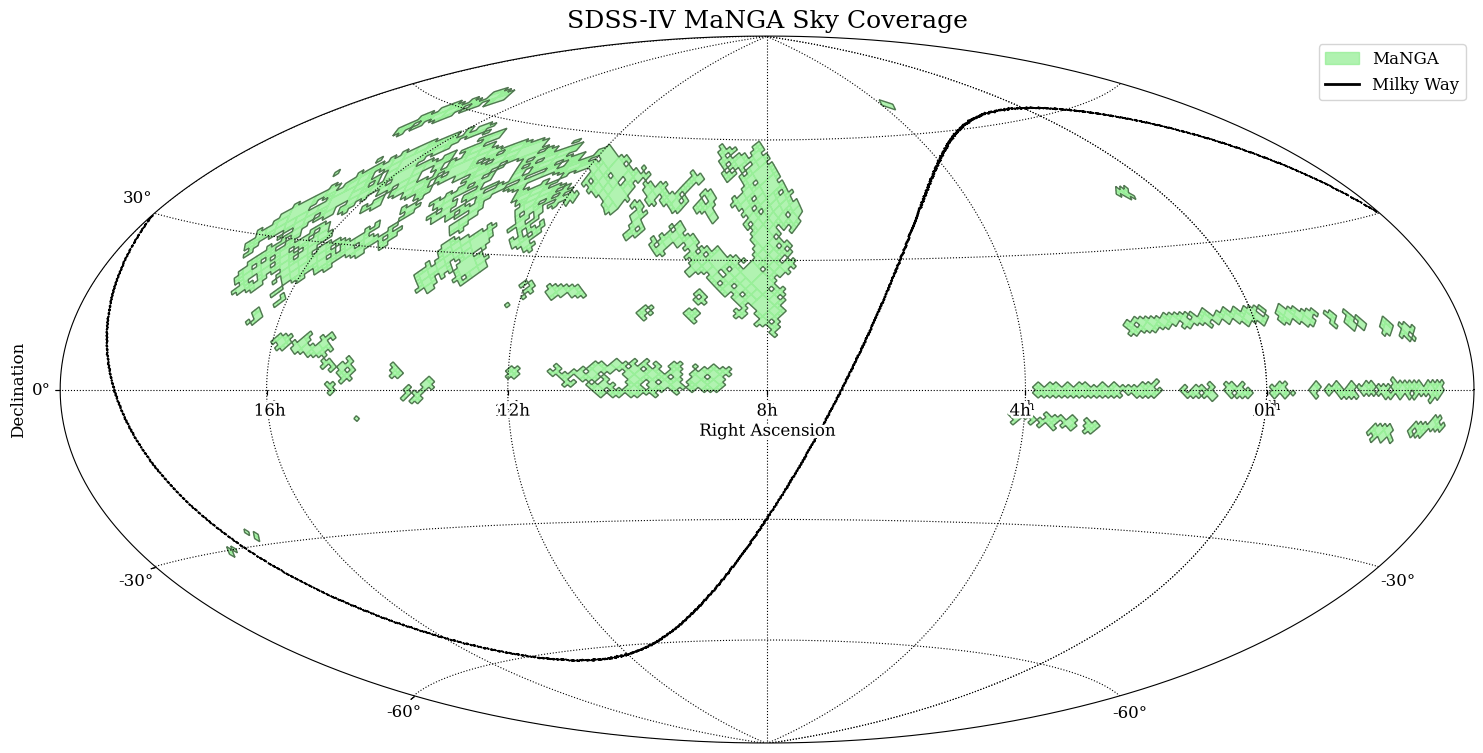About this Article
MAST Staff - 2024 Oct 30SDSS Data Now Available at MAST
The first survey in the SDSS Legacy Archive at MAST is now live!
The Sloan Digital Sky Survey (SDSS) is an international collaboration producing comprehensive ground-based imaging and high-resolution spectroscopic surveys since 1998, currently in its fifth phase of operations (SDSS-V). In its current phase, SDSS-V, it is mapping quasars, the Milky Way's stars, and its interstellar medium using robotic fiber spectroscopy at Apache Point and Las Campanas, as well as a wide field integral field unit at Las Campanas. As readers of this newsletter know, the Mikulski Archive for Space Telescopes (MAST) is the primary data archive for all observations from HST, JWST, and Roman, and contains data from 20+ other missions. MAST has partnered with SDSS-V in a new project called the "SDSS Legacy Archive at MAST", a copy of all science-ready SDSS data hosted by MAST side-by-side with our space missions.
By the end of 2028, the SDSS Legacy Archive at MAST (SLAM) will include all final versions of images, spectra, catalogs, and Value Added Catalogs (VACs) across all public SDSS data releases through SDSS-V. The first survey in the SDSS Legacy Archive at MAST is the SDSS-IV Mapping Nearby Galaxies at Apache Point Observatory (MaNGA) survey. MaNGA data products include optical-wavelength 3D spectral cubes, extracted spectra, and galaxy maps containing velocities, spectral index and emission line measurements for over 10,000 low-redshift galaxies (z < 0.27).
Data Access
The SDSS Legacy Archive at MAST User Manual describes how to search for and download SDSS data using MAST interfaces. SDSS data can be accessed at MAST in-browser using the MAST Portal or in Python using astroquery.MAST. Search for Mission="SDSS" to view all SDSS data, or search for a target name ("M101") or by coordinates ("14h03m12.6s +54d20m56.7s") for specific targets.
All released SDSS data, including the raw data and pre-science data products, still remain available through the SDSS-provided services including the Science Archive Server (SAS) and Catalog Archive Server (CAS). The copies hosted at MAST provide an additional entry point to discovering and accessing the data, and provide all of the advantages of a multi-mission archive: SDSS data is now available through the same interfaces as HST, JWST, TESS, and Gaia holdings, opening up new opportunities for scientific synergies between missions.
More Coming Soon
The SDSS Legacy Archive at MAST is under active development! More surveys will be added in the near future. By the end of 2028, the SDSS Legacy Archive at MAST will include all final versions of images, spectra, catalogs, and Value Added Catalogs (VACs) across all public SDSS data releases through SDSS-V.
Links and Resources:



